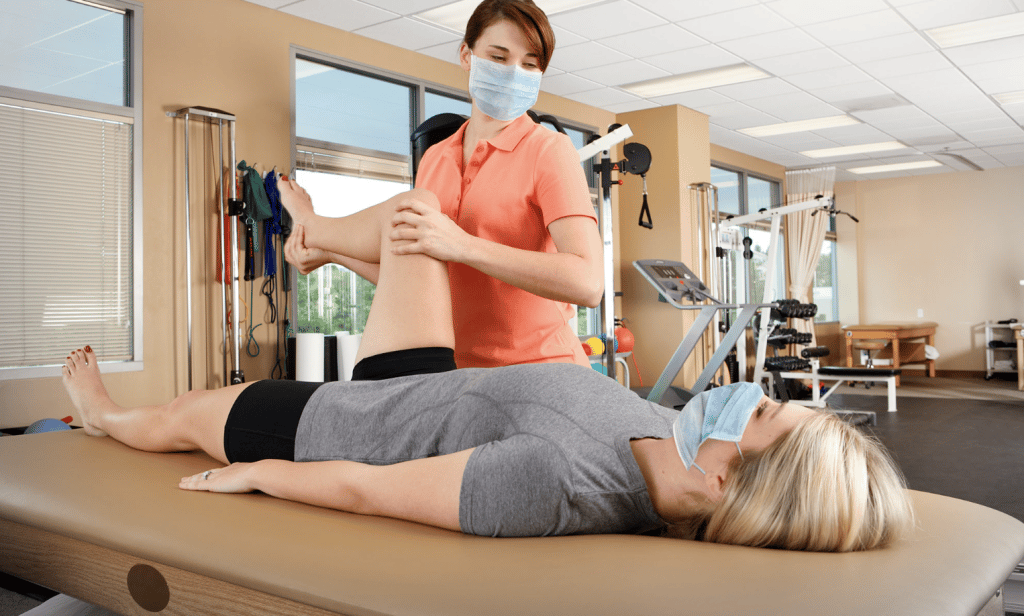Knee replacement surgery is never easy on the body or the mind. Whether you’ve just decided to get a replacement, are in the waiting room at the hospital, or are fresh out of general anaesthesia, it’s good to know how best to care for your knee after the surgery is over and done with.
This article will give you an idea about what to expect after a knee replacement and give you a few tips on how to make the recovery as smooth as possible.
1. Set personal expectations
Setting expectations, whether that’s with your doctor, physiotherapist, or yourself is very important. Everyone’s experience with surgery is different, so comparing your recovery process with the next person isn’t exactly helpful. But knowing what to expect along the way and setting some personal goals and expectations about your recovery can help you take ownership over the process and prevent any unhealthy comparisons.
2. Prepare to be patient with yourself and others
Surgery will alter your life in fundamental ways, and your recovery and post-recovery phases may put some stress on yourself and others when it comes to commitments and expectations. It’s good to know about this in advance and to practise patience when it comes to disagreements or differences of opinion at home. Remember that your recovery is the priority and others should respect that too.
3. Know when to rest
It’s normal to want your recovery to be over as quickly as possible, but plenty of downtime and patience is key when you’re fresh out of knee replacement surgery. And while it’s good to keep up regular exercise as mandated by your healthcare professional, be sure not to overdo it – especially during the early recovery phase.
If you start to notice slight swelling and inflammation remember to apply ice and keep your leg elevated. This will give you the best chance at a fast and strong recovery.
3. Meet with your Physio
Getting a regular appointment set up with your local physio is an important step in ensuring your knee replacement recovery goes smoothly. With expert knowledge and experience, they should be your go-to for recovery and post-op strengthening and optimisation.
A qualified physio can help you:
- Improve mobility
- Normalise your muscle length
- Monitor progress
- Prevent re-injury
- Reach your recovery goals
4. Get walking as soon as you can
As soon as your doctor gives you the thumbs up – start walking. It almost sounds counter-productive, but starting to walk as soon as it’s possible is an essential milestone on your recovery journey. This is because our joints love to be limber. In fact, they thrive when they move and can do their job properly. Walking will help your joints stay lubricated and also work to prevent complications post-surgery like blood clots and poor circulation.
5. Learn how to manage pain
Managing pain will be an inevitable part of your recovery process. Any joint replacement rehab plan will give you tips on what to do and what not to do.
Essentially, it’s important to know where the pain is coming from and what kind. This is important information for your care and recovery team to know. While pain is a normal part of the process, there are some instances where pain may indicate something isn’t quite right. If you’re in pain and unsure what to do – make sure you speak to a medical professional immediately.
6. Exercise regularly
Regular exercise should be your recovery’s bread and butter. While physio treatment can ensure your joints are on track to a safe and comfortable recovery, keeping up regular and appropriate exercise is also key to re-strengthening and rejuvenating your leg muscles after surgery.
Remember that exercise should always be targeted and mandated by your healthcare professional or your physio. It can be tempting to rush into more intensive exercises or routines that you are used to, but keeping a lid on those and focusing on recovery is essential.
Tips for a smooth recovery at home
Getting home after your surgery is always a welcome step in your recovery phase, but it’s good to make sure you’re prepared. Without the right support, you could end up doing more than your fair share of moving around, lifting, and other activities that will put your recovery at risk.
With that in mind, here are some tips to improve your home recovery environment:
- Remove tripping hazards
- Keep essential items within arm’s reach
- Maintain a healthy diet
- Ask for support with groceries and cleaning
Book in your physiotherapist in advance
Before you get your surgery, it’s good to know exactly where you’re going to receive your post-surgery physio treatment. Not only because it takes the stress away, but it also means you can lock in a treatment plan with an expert Physio who can guide you through the recovery phase. Book your physio appointment today and ensure your joint replacement rehab goes as smoothly as possible.
